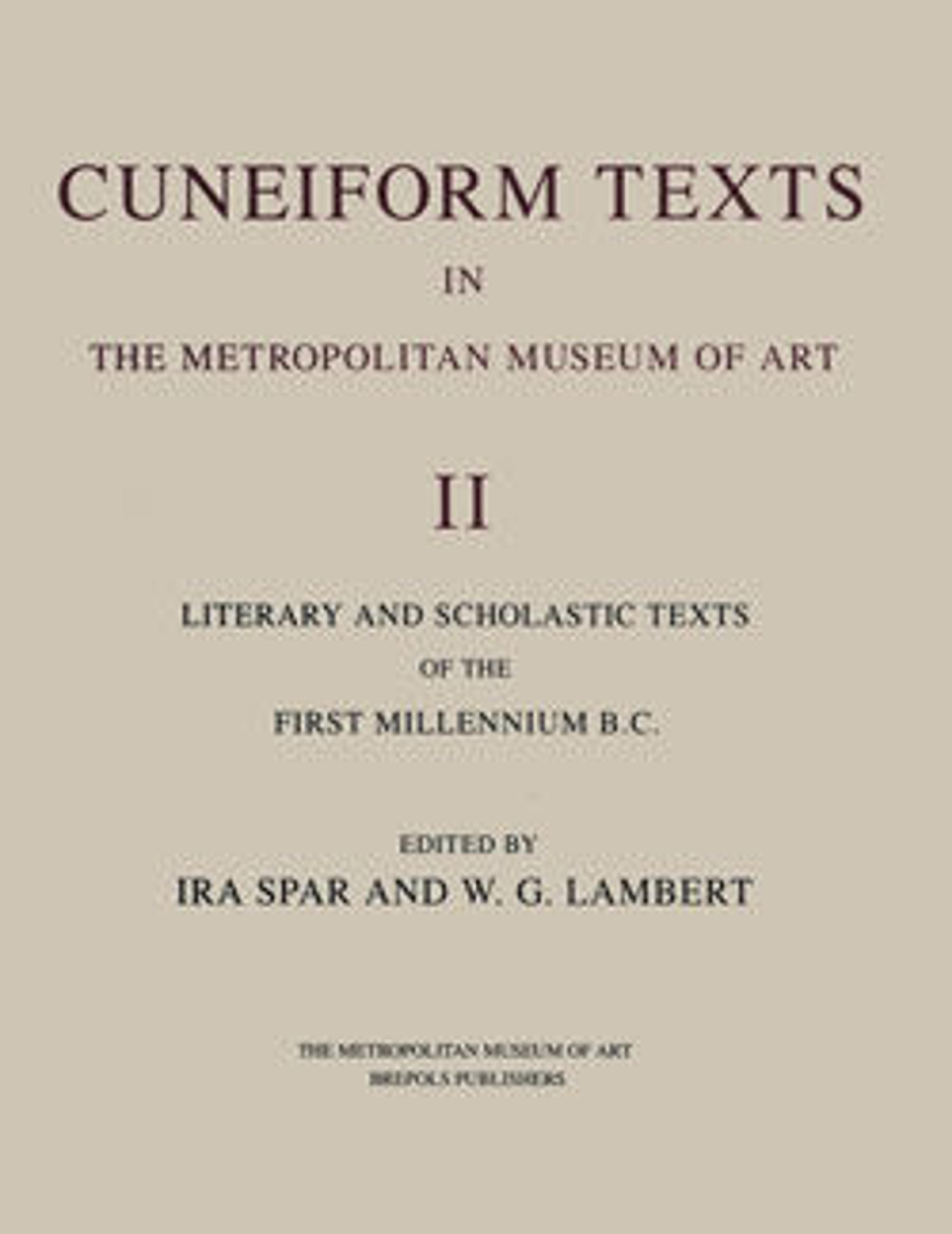Cuneiform tablet: Utukku lemnutu, tablet 12
The invention of writing in approximately 3300 B.C. was one of many developments in administrative technology--including the use of geometric tokens for counting and cylinder seals to guarantee transactions--that accompanied the growth of the first cities and states in southern Mesopotamia. Proto-cuneiform is the name given to the earliest form of writing--pictograms that were drawn on clay tablets. Gradually, the pictograms became abstracted into cuneiform (Latin, "wedge-shaped") signs that were impressed rather than drawn. At its greatest extent, cuneiform writing was used from the Mediterranean coast of Syria to western Iran and from Hittite Anatolia to southern Mesopotamia. It was adapted to write at least fifteen different languages. The last dated cuneiform text has a date corresponding to A.D. 75, although the script probably continued in use over the next two centuries.
In later periods especially, scribes produced long, multi-tablet series of writings. One series, known as Utukku lemnuti, records incantations to aid in and prevent against attack by demons and ghosts. Some incantations derive from texts dating back to the third millennium B.C., when such texts were first composed, and were transmitted over the centuries as part of the lore of the magician (Akkadian ashipu). This clay tablet is the twelfth in the series. The text, which reads from left to right, deals with the demonic disruption of nature and agriculture and describes a scapegoat ritual in which a goat is used to carry off the evil that afflicts a patient.
Several tablets of the series Utukku lemnuti are in the collection of the Metropolitan Museum of art, including tablets 3 (86.11.468 + 86.11.379a, c-f) and 16 (86.11.382a, b + 86.11.382c), as well as several other copies of tablet 12 (86.11.366 + 86.11.542; 86.11.379b + 86.11.534).
In later periods especially, scribes produced long, multi-tablet series of writings. One series, known as Utukku lemnuti, records incantations to aid in and prevent against attack by demons and ghosts. Some incantations derive from texts dating back to the third millennium B.C., when such texts were first composed, and were transmitted over the centuries as part of the lore of the magician (Akkadian ashipu). This clay tablet is the twelfth in the series. The text, which reads from left to right, deals with the demonic disruption of nature and agriculture and describes a scapegoat ritual in which a goat is used to carry off the evil that afflicts a patient.
Several tablets of the series Utukku lemnuti are in the collection of the Metropolitan Museum of art, including tablets 3 (86.11.468 + 86.11.379a, c-f) and 16 (86.11.382a, b + 86.11.382c), as well as several other copies of tablet 12 (86.11.366 + 86.11.542; 86.11.379b + 86.11.534).
Artwork Details
- Title: Cuneiform tablet: Utukku lemnutu, tablet 12
- Period: Seleucid
- Date: ca. late 1st millennium BCE
- Geography: Mesopotamia, probably from Babylon (modern Hillah)
- Culture: Seleucid
- Medium: Clay
- Dimensions: 0.47 x 0.87 x 1.3 in. (1.19 x 2.21 x 3.3 cm)
- Credit Line: Purchase, 1886
- Object Number: 86.11.486
- Curatorial Department: Ancient West Asian Art
More Artwork
Research Resources
The Met provides unparalleled resources for research and welcomes an international community of students and scholars. The Met's Open Access API is where creators and researchers can connect to the The Met collection. Open Access data and public domain images are available for unrestricted commercial and noncommercial use without permission or fee.
To request images under copyright and other restrictions, please use this Image Request form.
Feedback
We continue to research and examine historical and cultural context for objects in The Met collection. If you have comments or questions about this object record, please contact us using the form below. The Museum looks forward to receiving your comments.
